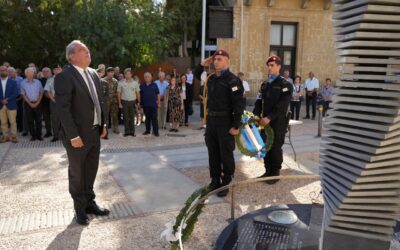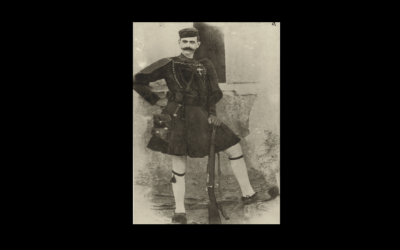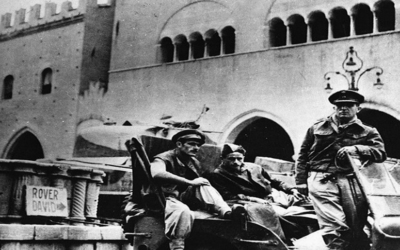HISTORY
HISTORY

The Varkiza Agreement was signed on February 12, 1945, in Vari, Attica, between members of the government of Nikolaos Plastiras and EAM / ELAS (Greek initials that stand for National Liberation Front / Hellenic People’s Liberation Army). The Agreement aimed at the institutional termination of the political and military clashes that took place in December 1944 and went down in history as the “Dekemvriana” (December events).
The December clashes in 1944 in Athens were a power struggle between the first post-occupation government of George Papandreou and the British, on the one hand, and EAM / ELAS, which had emerged as the strongest resistance organization, on the other.
The December events left about 7,000 fighters dead (230 British, 3,500 government officials, and 3,000 EAM fighters), while the number of dead civilians remains undetermined.
On January 11, 1945, after a month of fierce clashes, a truce was signed between the two sides, under which the EAM / ELAS forces were forced to leave Attica and Thessaloniki. On February 2, 1945, the negotiations for the signing of the agreement commenced at the summer residence of the politician Panagiotis Kanellopoulos, in Vari.
Also read: Remembrance Day of the Kalavrita Massacre
Prime Minister Nikolaos Plastiras, who had succeeded George Papandreou on January 3, was represented by Foreign Minister Ioannis Sofianopoulos, Interior Minister Periklis Rallos, and Agriculture Minister Ioannis Makropoulos.
On the other hand, the EAM delegation consisted of George Siantos (General Secretary of the Hellenic Communist Party), Dimitrios Partsalidis (Secretary of the EAM central committee), and Elias Tsirimokos (General Secretary of the Union for People’s Democracy).
The relevant consultations lasted ten days and resulted in an agreement signed on February 12, 1945. Its 9 articles provided, inter alia, for the disarmament of all the armed forces of the Resistance, the reorganization of the National Army, the liquidation of the state apparatus by the German partners, amnesty for political offenses, a referendum on the state issue, and the election of a Constituent Assembly to draft a new Constitution.
Also read: Pavlos Melas | The emblem of the Macedonian Struggle
The fact that the text of the Varkiza Agreement was published in the Government Gazette, thus giving its content the force of law, demonstrates its great importance for the restoration of peace.
It is worth noting that the signing of the Agreement was opposed by Aris Velouchiotis, who not only did not comply with the decisions of the Hellenic Communist Party, but also tried to continue the armed struggle.
On February 28, the disarmament of ELAS was completed, which delivered 100 guns, 210 mortars, 420 machine guns, 1,400 submachine guns, 700 automatic rifles, 49,000 rifles, and pistols.
However, the gap between the two factions did not seem to be bridged and soon the Varkiza Agreement became blank. Violations of its terms on both sides led to a new political polarization and triggered the events of the Civil War, which was to last until August 30, 1949.
Also read: Charalambos Mouskos | The first EOKA fighter to fall fighting the English
NEWSLETTER SUBSCRIPTION
Memorial Speech by the Minister of Defence Vassilis Palmas at the annual memorial service for the fallen of the 3rd Company of the 211th Infantry Battalion
The Minister of Defence of the Republic of Cyprus, Mr. Vassilis Palmas, attended the annual commemoration of the fallen of the 3rd…
120 years since the death of Pavlos Melas—The Hero of the Macedonian Struggle—Photos
The Armed Forces honor the memory of the ethnic martyr who gave his life for the liberation of Macedonia…
80 years since the Battle of Rimini – The Brigade that wrote golden pages of history
The “Rimini Brigade” wrote new pages of history for Greece, placing it in the camp of the winners. This success was linked to hope and…
Greece | PDPA’s “yes” to Placing Police Cameras on the Streets
The Personal Data Protection Authority gave the green light to the Hellenic Police’s placement of cameras on the streets to prevent and…
MBDA | Modernising TAURUS Missiles for the Bundeswehr
The Bundeswehr and TAURUS Systems GmbH (a joint venture between MBDA and SAAB) have signed a contract for the maintenance and…
Syria | New Minister of Defence Murhaf Abu Kasra
Syria’s new leaders have appointed Murhaf Abu Kasra, a prominent figure among rebels who ousted Bashar al-Assad, as…
Turkey – Spain | Memorandum of Cooperation for the Development of Turkish Hurjet Training Aircraft
Turkey and Spain have signed a Memorandum of Understanding (MoU) to develop Turkish-made Hurjet trainer-light fighter aircraft.
Red Sea | A US Fighter Jet was Shot Down by Friendly Fire
A US fighter jet was shot down by friendly fire over the Red Sea on Sunday, as announced by the headquarters of the US armed…
Northrop Grumman | Winner of the US Navy’s Next E-130J Aircraft Development Program
Northrop Grumman won the $3.5 billion contract for the US Navy’s E-130J nuclear command, control, and communications (NC3)…





















